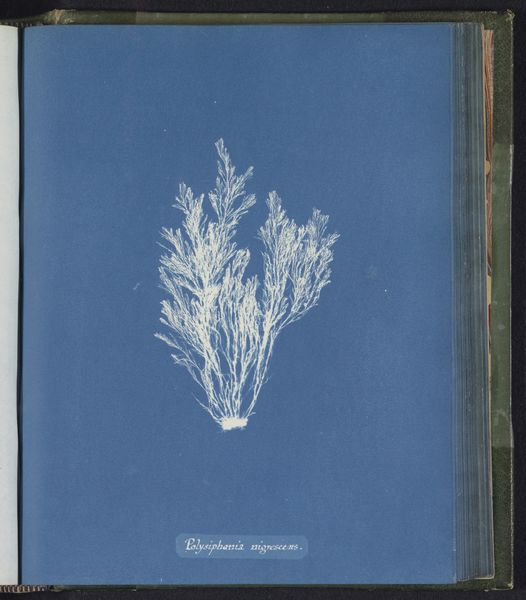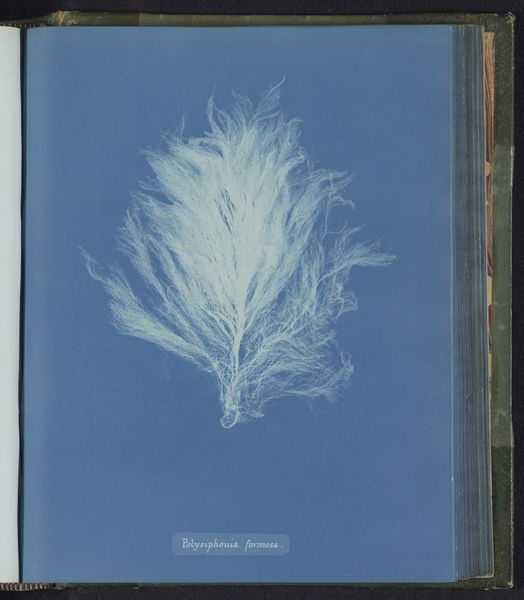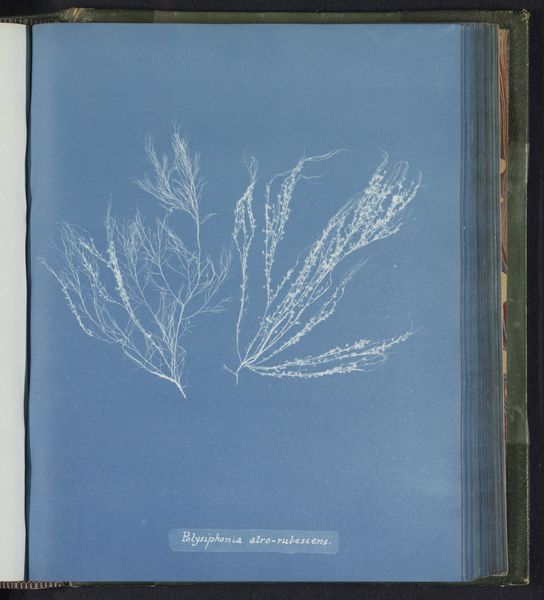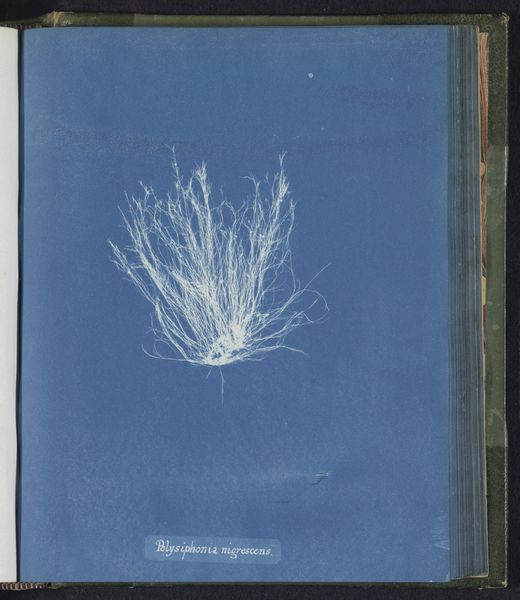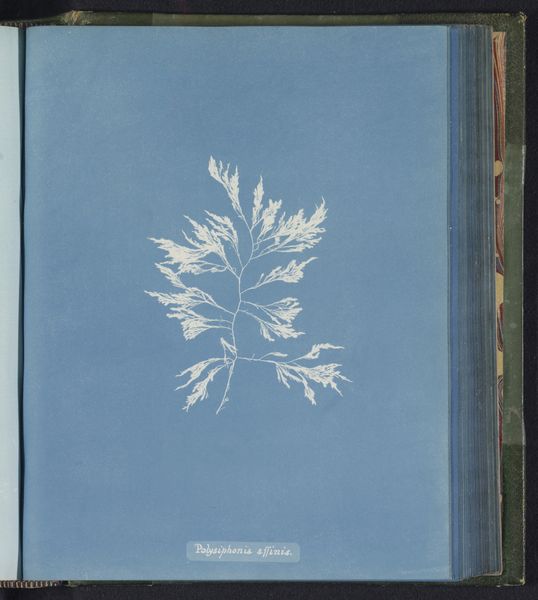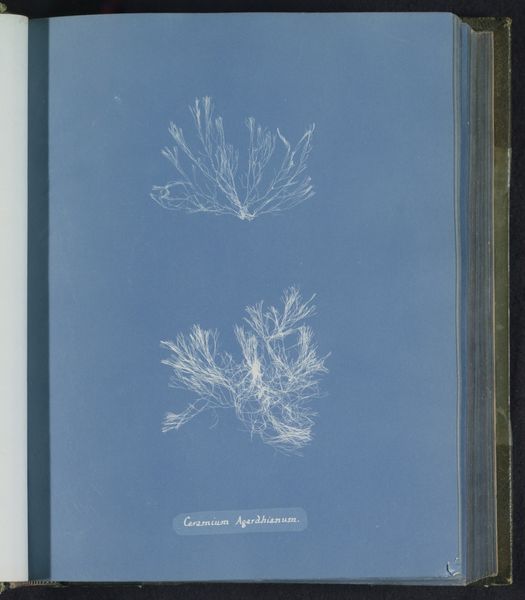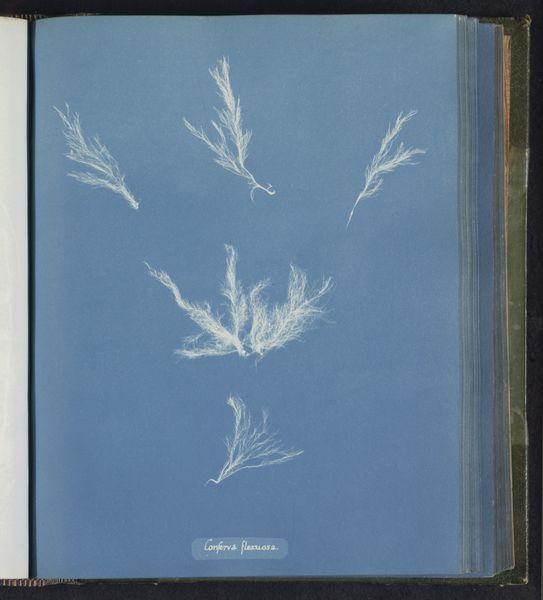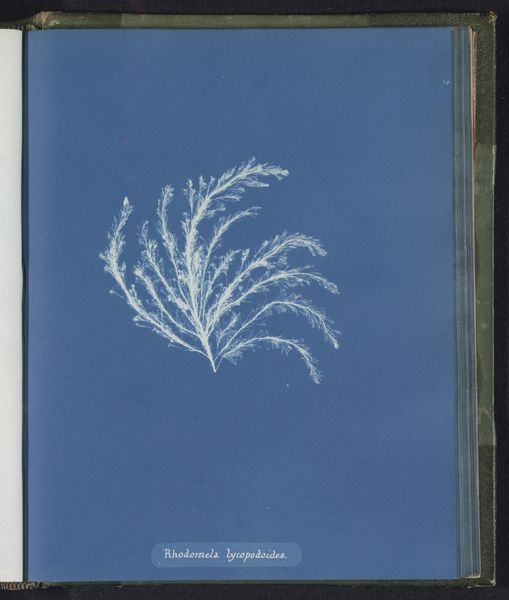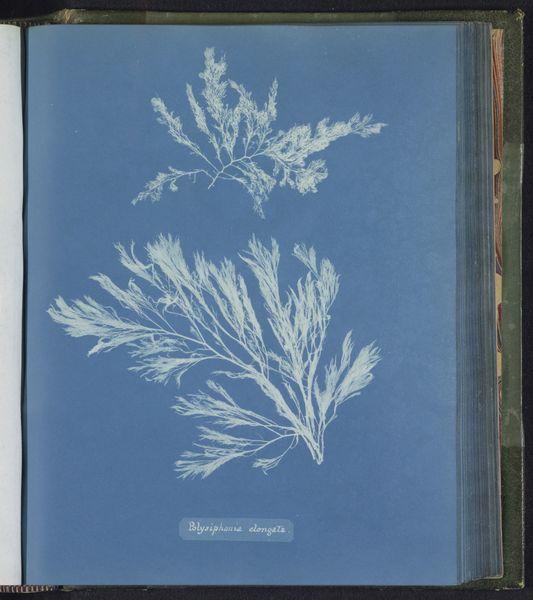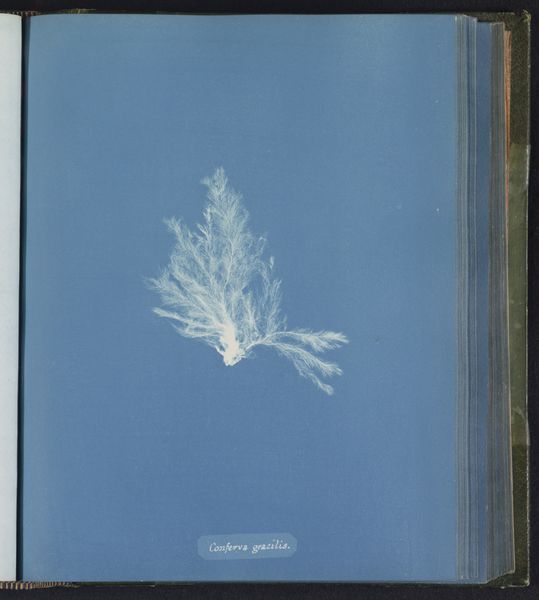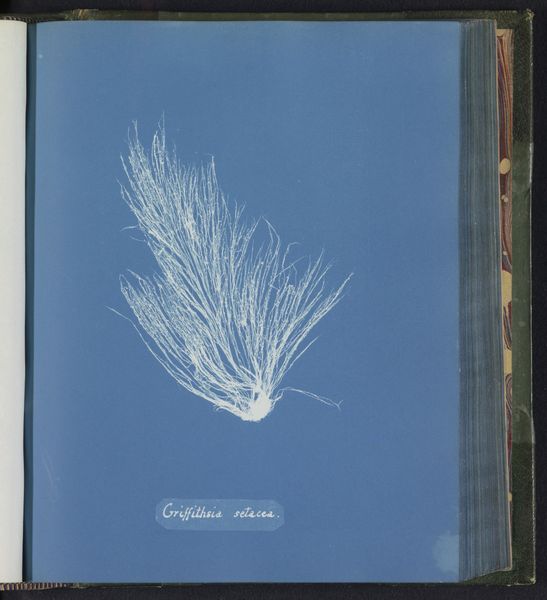
print, cyanotype, photography
#
still-life-photography
# print
#
cyanotype
#
photography
#
naturalism
#
realism
Dimensions: height 250 mm, width 200 mm
Copyright: Rijks Museum: Open Domain
Curator: Before us we have "Polysiphonia thuyoides", a cyanotype made by Anna Atkins between 1843 and 1853. It’s a striking image isn’t it? Editor: Absolutely. The stark white of the seaweed against that intense blue creates an almost ethereal effect. The negative space feels so integral, not merely background. Curator: Indeed. What’s remarkable is that Atkins, a botanist herself, wasn’t simply creating art. She used this new photographic process to document and classify algae species scientifically. She ended up publishing “Photographs of British Algae: Cyanotype Impressions" and therefore some consider it the first book illustrated with photographs. Editor: The work's historical weight and artistic impact become evident once we start looking at it. Visually, the textures created by the cyanotype process are incredible. The fine lines of the algae are exquisitely rendered, conveying not just form but something close to a tangible essence. There is realism yet something else besides. Curator: The placement of this work is really fascinating when one understands Atkins’ historical situation as a woman in science. She combined artistic expression with scientific documentation which was revolutionary at the time, but how was her access and reception managed as a woman, within the scientific networks, photographic societies and the British cultural sphere? Editor: That interplay between representation and truth that emerges from it all is rather the essence of photographic endeavor—it's so powerfully present here. Curator: Absolutely! The image embodies both artistic intent and an ambition to catalogue. It is both pragmatic and wondrous. Editor: A fine intersection point of art and science, indeed, creating unexpected but happy results. It all gives one pause.
Comments
No comments
Be the first to comment and join the conversation on the ultimate creative platform.
